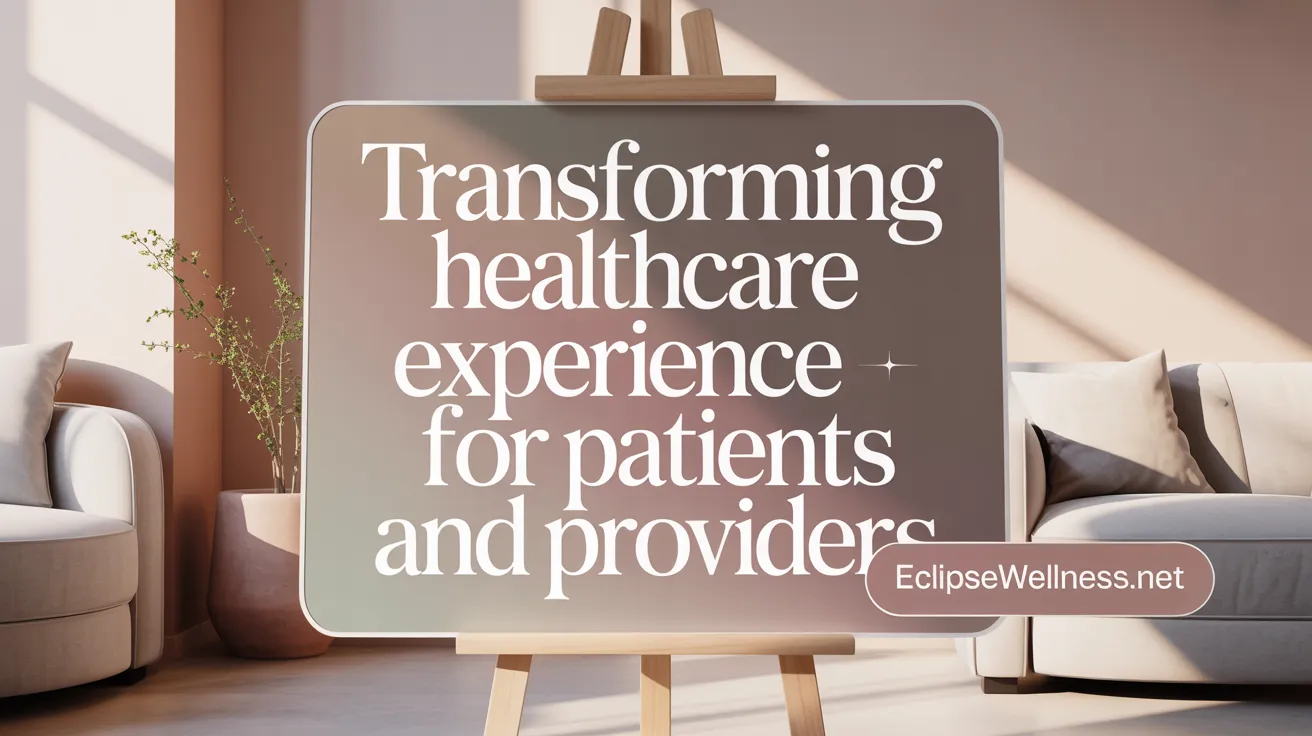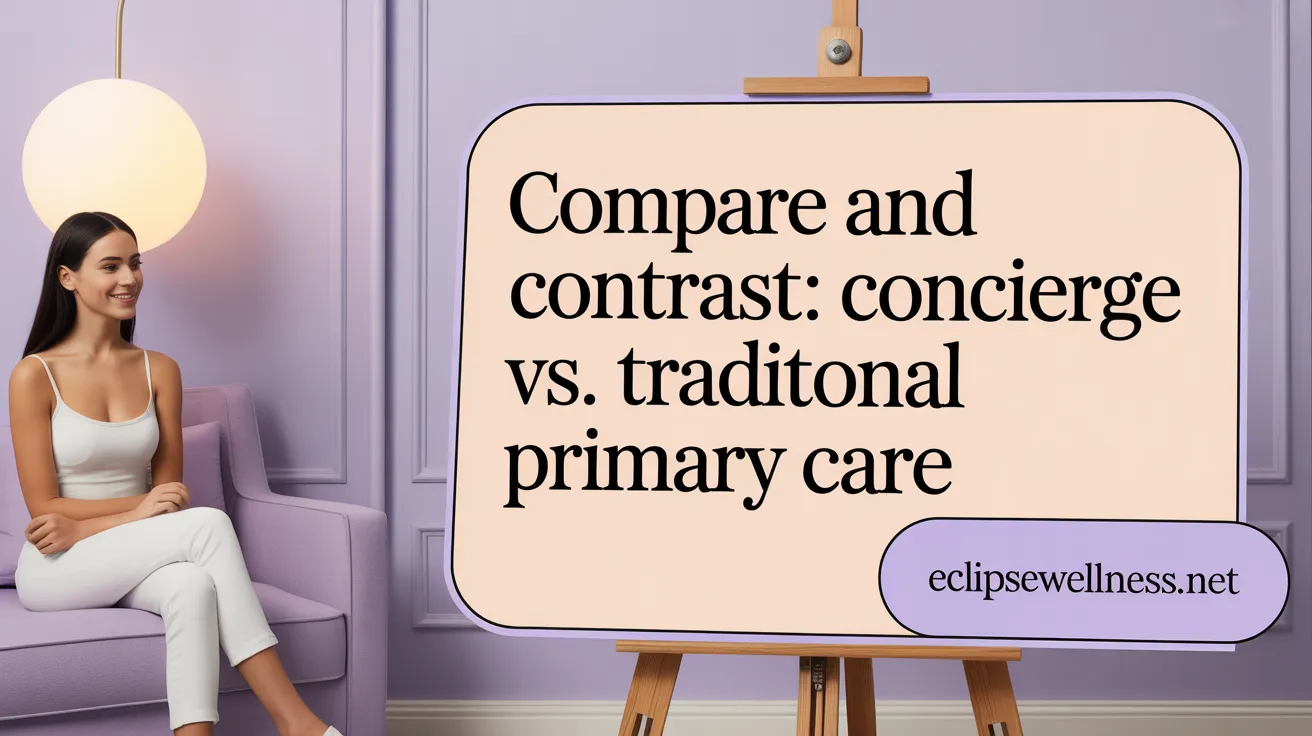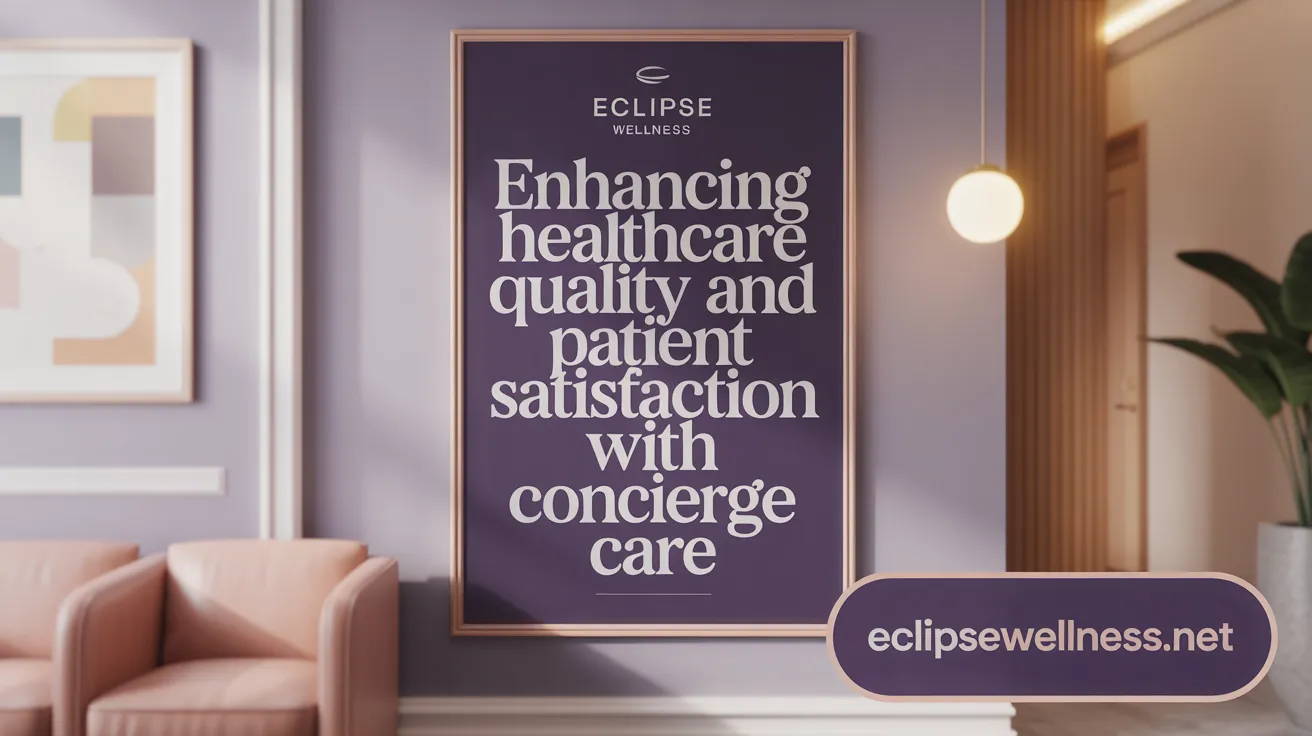Setting the Stage for Healthcare Transformation
Concierge primary care is reshaping how patients and providers interact, offering a personalized, proactive approach to health management that contrasts sharply with traditional care. This model, characterized by smaller patient panels and enhanced access, is gaining momentum amid challenges in the healthcare landscape, including provider burnout, chronic disease burdens, and patient dissatisfaction. As the healthcare system evolves, understanding concierge medicine’s core principles, benefits, and implications is vital for grasping its role in the future of healthcare.
Understanding Concierge Primary Care: Core Concepts and Principles

What is concierge primary care and what are its key principles?
Concierge primary care is a healthcare delivery model where patients pay a membership or retainer fee to access a more personalized, comprehensive, and continuous level of care from their primary care physicians. Unlike traditional models managing thousands of patients, concierge practices limit their patient panels, often to about 300-600 individuals. This smaller size allows doctors to dedicate more time to each patient, typically offering longer appointment durations and prompt access for urgent needs. For more details, see Concierge medicine overview.
A core feature of this model is the emphasis on proactive health management, including preventive care, lifestyle counseling, and early disease detection. Patients benefit from direct communication channels like phone, email, or text, which enables real-time consultations and enhanced accessibility outside regular office hours. This approach fosters stronger doctor-patient relationships, higher satisfaction, and improved health outcomes. Learn about Benefits of Concierge Medicine and Improved Health Outcomes and Physician-Patient Relationship.
While the personalized and accessible nature of concierge primary care provides clear advantages, it also raises ethical considerations. The high membership fees—sometimes exceeding $50,000 annually—mean that such services are primarily accessible to wealthier individuals, potentially exacerbating disparities in healthcare access and equity. See more on High fees for concierge practices and Healthcare disparities and Concierge care and income implications. As a result, while concierge primary care enhances quality and satisfaction for those who can afford it, it poses questions about fairness and inclusivity in the broader healthcare system. Explore ethical concerns and equity in Concierge medicine ethical concerns.
In summary, concierge primary care aims to deliver a highly tailored, preventive, and accessible healthcare experience through personalized attention and proactive management, but its implementation must be balanced with considerations of health equity and access for all population segments. For a comprehensive overview of Concierge Medicine benefits and drawbacks and Patient-centered care principles, see these resources.
Benefits of Concierge Primary Care for Patients and Providers

How does concierge primary care benefit patients and healthcare providers?
Concierge primary care offers numerous advantages for both patients and health professionals, transforming the traditional healthcare experience. Patients gain improved access to their physicians through same-day or next-day appointments, longer consultation times, and direct communication channels such as call, email, or text. This relationship fosters a more personalized, preventive-focused approach, often leading to higher satisfaction, better health management, and early detection of issues.
For healthcare providers, the model enables smaller patient panels—typically 300 to 600 patients—in contrast to traditional practices managing thousands. This shift allows physicians to dedicate more time and attention to each individual, improving quality of care and patient trust. Additionally, the reduced administrative burdens, such as less time spent on billing and paperwork, contribute to better work-life balance and lower burnout rates (Reasons for switching to concierge models).
Enhanced relationships also encourage proactive health strategies, as providers can tailor care plans based on comprehensive understanding of each patient’s lifestyle, genetics, and health goals (Comprehensive health assessments and personalized wellness plans). Nevertheless, this model faces criticism: the higher fees may limit access to wealthier individuals, potentially increasing healthcare disparities. Moreover, the concentration of resources in concierge practices might worsen existing primary care provider shortages, impacting the broader health system.
In sum, concierge primary care significantly elevates patient experience and provider satisfaction by emphasizing quality, personalized attention, and early intervention (Concierge medicine benefits and improved patient satisfaction). However, its broader implications for equity and healthcare infrastructure must be carefully considered to ensure inclusive and sustainable healthcare delivery (Healthcare disparities and concierge medicine).
Concierge Primary Care Versus Traditional Models: A Comparative Analysis

How does concierge primary care compare to traditional primary care models?
Concierge primary care significantly differs from traditional models by focusing on personalized, patient-centered services that emphasize accessibility and quality. In concierge practices, physicians typically manage smaller patient panels, usually between 300 to 600 patients, compared to the thousands managed in traditional practices.
Patients pay an annual membership fee, which often ranges from $1,500 to $2,400, providing them with benefits such as longer appointments, same-day or next-day access, and 24/7 communication via phone, email, or text. This model enables doctors to spend more time with each patient, fostering stronger relationships and better management of chronic conditions.
In contrast, traditional primary care usually involves larger patient loads, shorter visit durations, and limited after-hours availability. Financially, traditional care is primarily insurance-based, with physicians billing insurance for services, whereas concierge models often operate outside insurance, which can impact accessibility (Medicare and concierge care membership fees).
Both models aim to improve healthcare quality and patient satisfaction. Concierge care emphasizes prevention, comprehensive wellness, and early diagnosis, leading to higher engagement and better health outcomes (Concierge Medicine Overview, Primary Care First payment model).
However, it comes with higher costs, which can restrict access mainly to wealthier individuals, raising concerns about inequality in healthcare access. Systemic challenges include potential exacerbation of primary care shortages, as more physicians shift to concierge practices to seek better compensation and reduced workload (Reasons for switching to concierge models).
| Aspect | Traditional Primary Care | Concierge Primary Care | Detail |
|---|---|---|---|
| Patient Load | 2,000–3,000 patients | 300–600 patients | Smaller panels allow personalized service |
| Fees | Insurance-based | Membership fees ($1,500–$2,400/year) | Varies by practice |
| Appointment Length | 10–15 minutes | Up to 60 minutes | Longer visits in concierge care |
| Accessibility | Limited after-hours | 24/7 access, same-day visits | Improved responsiveness |
| Focus | General health, episodic care | Preventive, chronic disease, lifestyle | Enhanced, holistic approach |
| Impact on Equity | Promotes broad access | May deepen disparities | Cost barriers restrict low-income access |
Overall, concierge primary care offers a more personalized and accessible healthcare experience but raises important questions about healthcare equity and systemic capacity. As this model grows, balancing personalized care with fair access remains a challenge for health systems.
Technological Innovations Enhancing Concierge Medicine
Digital health, artificial intelligence, and advanced technologies are revolutionizing the landscape of concierge medicine, facilitating more personalized, accessible, and efficient care. One of the most impactful innovations is the use of telemedicine and remote monitoring. Wearables, mobile apps, and remote sensors enable continuous health tracking outside traditional clinical settings, allowing physicians to monitor vital signs, activity levels, and chronic conditions in real-time. This proactive approach supports early detection and intervention, which significantly improves health outcomes.
AI applications further enhance diagnostics and care personalization. Advanced algorithms analyze vast amounts of data—such as electronic health records, genetic profiles, and lifestyle metrics—to identify health risks before symptoms appear. AI-driven tools assist clinicians in creating tailored treatment plans, predicting disease progression, and optimizing medication choices, making care more precise and efficient.
Digital health tools, including patient portals, health apps, and chatbots, foster increased patient engagement and adherence. These platforms provide instant access to health information, appointment scheduling, medication reminders, and educational resources, empowering patients to actively participate in their care. By facilitating seamless communication between patients and providers, digital tools reduce gaps in care and enhance the overall patient experience. The use of digital health technologies in concierge medicine plays a key role in this empowerment.
Operational efficiencies are also gained through data-driven decision-making. Automated workflows, predictive analytics, and AI-powered scheduling help practices manage resource allocation effectively, reduce administrative burdens, and improve appointment availability. This enables physicians to dedicate more time to direct patient care, aligning with the core principles of concierge medicine. Digital tools supporting these efficiencies underscore the enhanced healthcare services in concierge medicine.
Despite these benefits, challenges such as data privacy, cybersecurity risks, and ethical concerns regarding algorithmic bias must be carefully managed. Ensuring robust data protection measures and equitable AI deployment is essential to maintain patient trust and uphold the integrity of personalized care.
In summary, the integration of digital health, AI, and technology is transforming concierge medicine into a more dynamic, responsive, and patient-centered service. These innovations promise not only enhanced health outcomes but also operational resilience, making personalized medicine more scalable and sustainable in the evolving healthcare ecosystem.
The Impact of Concierge Primary Care on Quality, Satisfaction, and Outcomes

How does concierge primary care impact healthcare quality, patient satisfaction, and health outcomes?
Concierge primary care plays a significant role in enhancing the overall quality of healthcare, elevating patient satisfaction, and improving health results. By managing smaller patient panels—usually around 300 patients compared to thousands in traditional settings—providers can dedicate more time to each individual. Patients benefit from longer, unrushed appointments, often lasting 30 minutes or more, facilitating thorough discussions about health concerns, lifestyle, and preventive measures.
This model promotes proactive health management, early disease detection, and better chronic condition control. For example, studies suggest that patients in concierge practices experience fewer hospitalizations—up to a 61.3% reduction—and have improved management of conditions such as hypertension and diabetes. Patients also report remarkably high satisfaction levels—around 90%—driven by the personalized care, immediate communication, and continuous relationships that create trust and loyalty.
In addition, concierge care emphasizes prevention through comprehensive screenings and tailored health plans. These practices lead to early intervention, potentially reducing emergency visits and hospital stays. There is also evidence pointing to lower mortality risk among such patients, highlighting health outcome benefits.
However, despite these promising results, current research indicates a need for more extensive, long-term studies. These are necessary to fully understand the implications on healthcare costs and to verify if the improved quality and outcomes can be sustained over time and across diverse populations. Overall, concierge primary care marks a promising advancement toward more personalized, effective healthcare delivery.
Future Outlook: Growth, Challenges, and Ethical Considerations
The future of concierge medicine and advanced primary care models is marked by promising growth, fueled by technological innovations and patient preferences for personalized, accessible, and preventive healthcare. Market projections suggest the U.S. concierge medicine sector could reach nearly $12 billion by 2034, with a compound annual growth rate of approximately 6.9% from 2025 to 2034. This expansion is driven by increasing demand for high-quality, individualized care, and the ability of these models to improve chronic disease management and patient satisfaction. Emerging primary care paradigms, such as membership-based practices, virtual clinics, and population-specific care, are gaining prominence, especially as traditional fee-for-service reimbursement structures face decline due to physician shortages and economic pressures. Nonetheless, systemic obstacles such as regulatory challenges, integration with value-based payment systems, and disparities in access will shape their development.
One significant aspect of the evolving landscape involves addressing ethical concerns. Concierge primary care models often favor higher-income populations, raising fears of deepening healthcare inequities. These practices can inadvertently contribute to a two-tiered healthcare system, where marginalized groups have limited access, thereby exacerbating existing disparities. Ethically, this raises questions about justice and fairness in healthcare provision.
From a systemic perspective, the proliferation of concierge services could impact the healthcare workforce and system equity. The concentration of resources and attention on select populations might divert healthcare providers and investments from underserved groups, intensifying shortages and undermining universal access efforts. Therefore, balancing innovation with equity remains crucial.
To address these challenges, strategic initiatives are needed. These include developing inclusive policy frameworks, promoting hybrid models that combine concierge and traditional care, and leveraging digital health tools to expand reach. Additionally, integrating concierge practices within value-based care models could help align incentives toward quality and cost-efficiency, making personalized care more sustainable and broadly accessible.
In summary, while concierge and advanced primary care models hold significant growth potential, their evolution must be carefully managed to mitigate ethical concerns and systemic impacts. Stakeholders should prioritize equitable access, innovative financing, and technological integration to ensure these models complement broader healthcare goals of fairness, efficiency, and high-quality care for all populations.
Embracing Concierge Primary Care as a Pillar of Future Healthcare
Concierge primary care represents a transformative shift toward more personalized, accessible, and proactive medical care that places patients at the center. This model delivers tangible benefits to both patients and providers, improving quality, satisfaction, and health outcomes through closer relationships and enhanced preventive care. Despite its promising advantages, concierge medicine must navigate challenges related to cost, access, and healthcare equity to ensure it complements broader system goals. Emerging technologies like AI and telehealth are vital enablers, expanding concierge care's reach and precision. As healthcare systems evolve, concierge primary care is well positioned to play a critical role in a hybridized, innovative future, balancing personalized treatment with digital advances to meet diverse patient needs and foster sustainable healthcare reforms.
